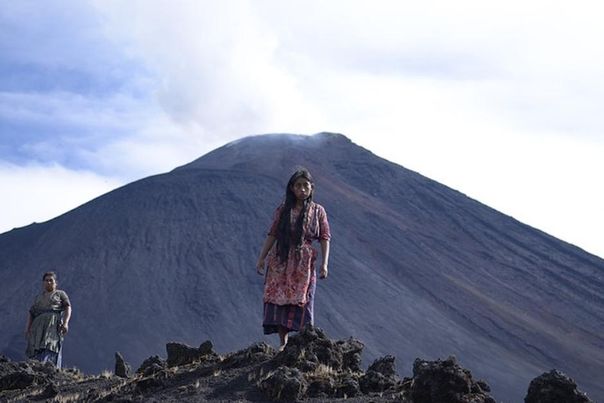Volcán (Volcano)
By Arantxa Sánchez

Mary wants to leave. She prepares her things, offers a bottle of alcohol and consumes her sexuality at the wrong time. Suddenly, the dreams of leaving her village in Guatemala vanish, and in their place only one path remains that will make her part of a phenomenon of injustice and inequality.
Ixcanul (2015) is Guatemalan director Jayro Bustamante's debut, and it takes as its starting point the abrupt departure of Maria (Maria Mercedes Coroy) for adulthood and weaves various themes around it that range from the individual and personal point of view (the awakening of sexuality) to more universal ones such as what it means to live in a context of poverty.
The working universe chosen by the director can flirt with and approach the documentary format, but the fictional liberties that are taken allow Maria's story, with its failed consummation of maternity, to be a creative impulse and the tip of the iceberg where other predicaments, such as forced marriages, exploitation and alcoholism, can appear.
The representation of indigenous society in Ixcanul allows Bustamante to move his film away from the cliché (the submissive indigenous woman, the imposing man) by turning that around and taking the viewer on a journey that proposes other ways of reading complex feelings such as maternity, spirituality and the mother-daughter filial relationship.
Based on a true story, the film achieves this translation of sentiments thanks to a slow but sure pace through the use of shots in black that indicate the evolution of the protagonist in a ritual of observation with the camera: from the immature Maria to the woman who is initiated as a mother.
Although in the end the social issue is the most obvious, there is a harmony between form and substance in the film: on the one hand, there is the measured presentation of their characters being dissected before the lens, but at the same time there is a prominent sculptural work going on with wide angle shots that capture landscapes and highlight the colors and shapes of nature to reaffirm the position of their protagonists in a situation of defenselessness.
So it is that the social layer of the film is the result of an exercise in intimacy that reveals the way of life from the periphery under dreams and aspirations such as running away from home, migrating to the United States and learning English. Bustamante's portrait of Maria is a universal experience with injustice but it is also a sketch of the breaking points that a woman like her—strong and opposed to her surroundings—experiences in a society that still does not know how to understand her.
The decision to begin and end with the same scene exemplifies the (unsuccessful) search for other possibilities and the absent look on Maria's face tells us that there is still a long way to go towards achieving this. Maybe what it will take is for a volcano to erupt.

